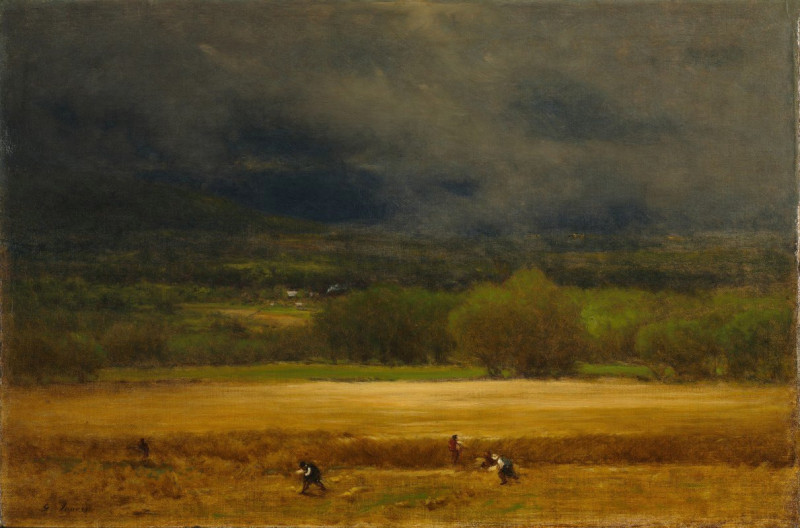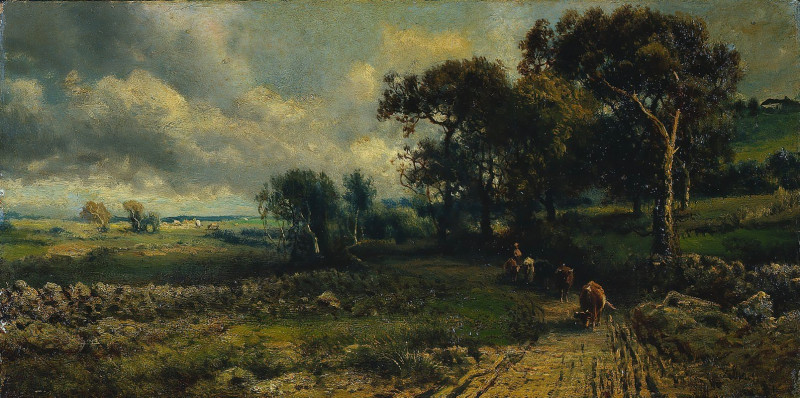The Wheat Field (c. 1875–77)
Technique: Giclée quality print
Recommended by our customers
More about this artwork
In the evocative landscape of "The Wheat Field," painted by George Inness around 1875-77, viewers are invited into a poignant, serene tableau that subtly captures the essence of rural life. This piece exemplifies Inness's mature style, where he imbued his scenes with a spiritual and transcendent quality, moving beyond mere representation.In the foreground, the golden hues of a vast wheat field stretch across the canvas, where figures are seen actively harvesting the crops. This scene of agricultural labor, depicted with loose and expressive brushstrokes, conveys the rustic charm and the harsh realities of 19th-century rural America. Despite the physicality of the labor, there is a sense of peace and timeless devotion to the land.The background is enveloped in a haze, a characteristic element of Inness’s landscapes, which creates a sense of depth and vastness. A distant mountain looms under a brooding sky, suggesting the transient light of either early morning or late afternoon. This interplay of light and shadow, alongside a masterful use of color gradation, enhances the mood and spiritual depth of the painting.The human figures, though small and modestly detailed, are integral to the composition, depicting a harmonious interaction between humanity and nature. This theme is recurrent in Inness’s work, reflecting his belief that art should transcend the physical world to express universal truths.
Delivery
Returns
George Inness (May 1, 1825 – August 3, 1894) was a prominent American landscape painter.
Now recognized as one of the most influential American artists of the nineteenth century, Inness was influenced by the Hudson River School at the start of his career. He also studied the Old Masters, and artists of the Barbizon school during later trips to Europe. There he was introduced to the theology of Emanuel Swedenborg, which was significant for him; he expressed that spiritualism in the works of his maturity (1879–1894).














































